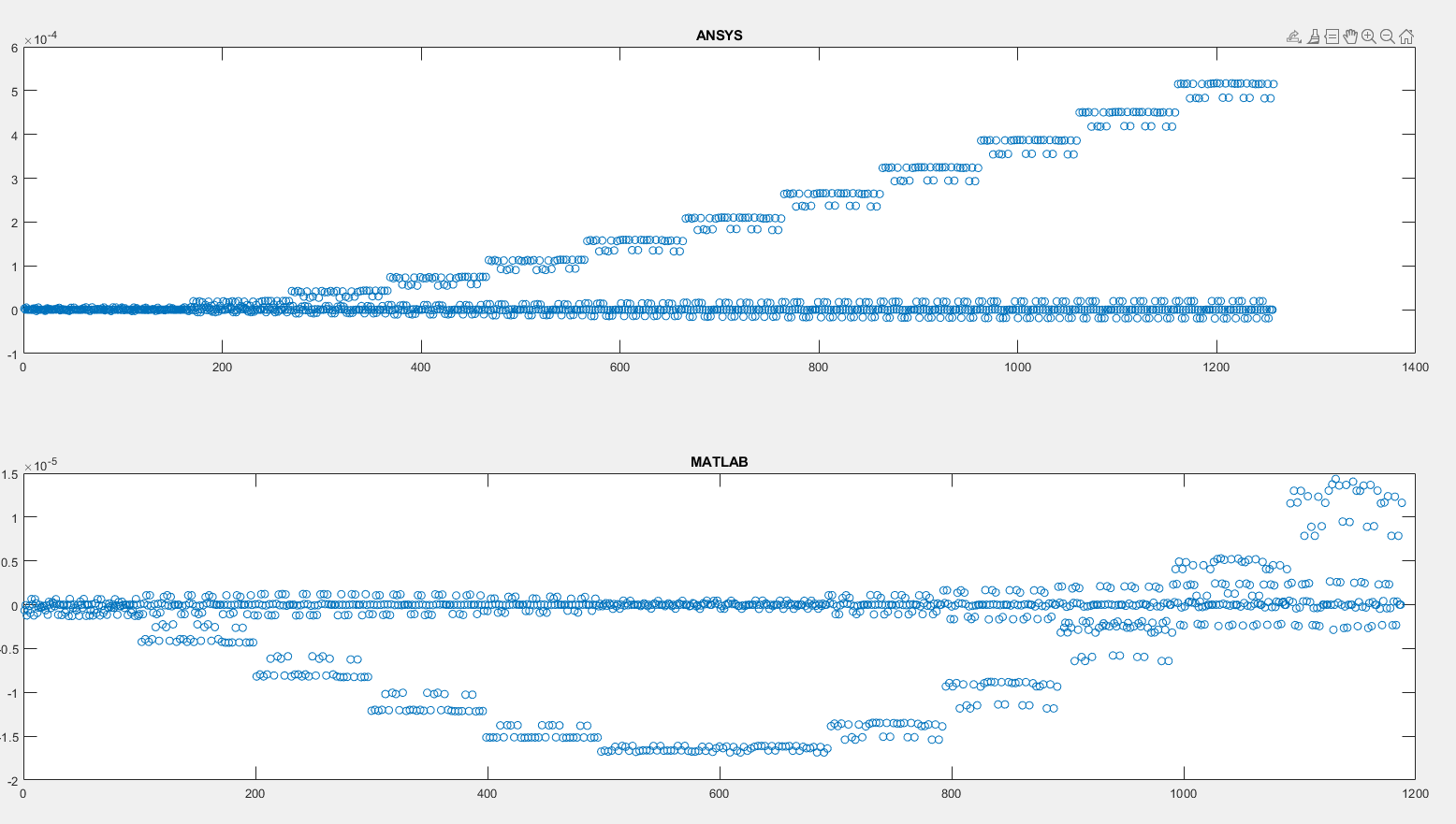-
-
May 9, 2024 at 1:26 pm
dhjang4522
SubscriberHi,
I have exported a stiffness matrix from modal analysis using the DMAT command and then carried out a static analysis by applying a load on a specific node. Knowing the node where the force was applied and having the symmetric stiffness matrix, I attempted a simple static analysis in MATLAB using
X=K\Fto calculate displacement. For simple models, the results aligned well, and the relative error was very small except for a few exceptionally small values.I checked how the node order changed in the left picture, and using the mapping vector in the right picture, I identified and the nodes where force was applied ( Z direction).
However, when extracting the stiffness matrix for slightly more complex models, the values completely change. Why does this situation occur?
Also, when performing transient analysis on a simple model using the generalized alpha (HHT-alpha) method, the results turn out well regardless of how short the time step dt is. However, for more complex models, the results diverge as (dt) decreases. Could both issues be related to problems with the stiffness matrix itself, or might they be due to issues within my code?
I would be grateful if you could let me know where I might have gone wrong!
-
May 13, 2024 at 2:58 pm
dlooman
Ansys EmployeeIn what way was the slightly more complex model more complex? Just more nodes and elements or did it include contact, some other nonlinearity or more complicated boundary conditions? In general, transient results will be affected by dt. At some point dt is smaller than the shortest significant period of the response and then the results will stop changing.
-
- The topic ‘Why does calculation of F = KU using exported Kmatrix only work for simple model’ is closed to new replies.



-
4607
-
1515
-
1386
-
1209
-
1021

© 2025 Copyright ANSYS, Inc. All rights reserved.











